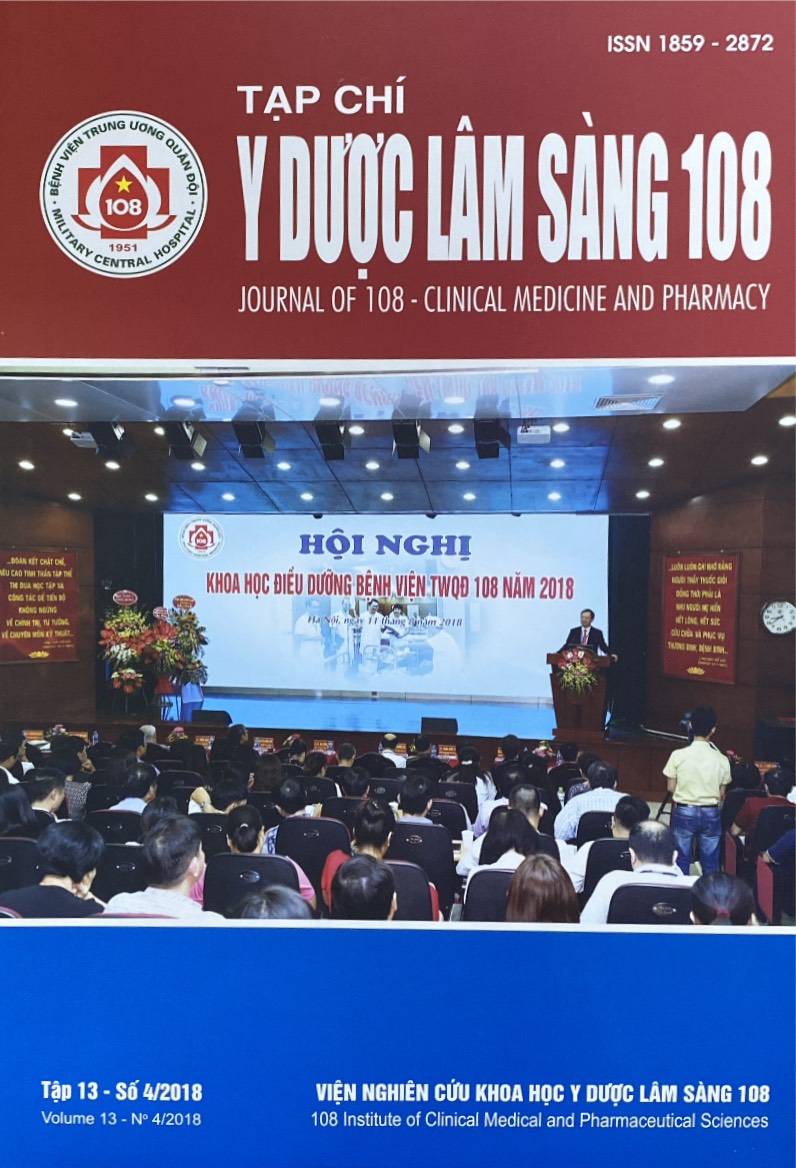Assess the change of glucagon-like peptide-1 concentration after treatment with monotherapy sitagliptin in patients with firstly-diagnosed type 2 diabetes mellitus
Main Article Content
Keywords
Abstract
Objective: To determine the concentrations and assess the changes of fasting glucagon-like peptide-1 concentration after treatment with monotherapy sitagliptin in patients with firstly-diagnosed type 2 diabetes mellitus (fT2DM). Subject and method: Studied on 44 fT2DM, who were selected for monotherapy treatment with sitagliptin (100mg/day) for 12 - 14 weeks, 48 patients with T2DM who are being treated over one year (T2DM group) and 52 healthy people in National Endocrinology Hospital. Result: The study results showed: The mean fasting GLP-1 in the fT2DM group was 6.84 ± 3.12 pmol/l, lower than that in the T2DM group and the control group. The prevalence of patients with the decreasing fasting glucagon-like peptide-1 concentration was 65.9%. After sitagliptin treatment (100mg/day), the glucagon-like peptide-1 concentration (12.83 ± 5.78pmol/l) increased higher than that before treatment (6.84 ± 3.12pmol/l) (p<0.001), be higher than the T2DM group (p<0.05) and as high as the control group (p>0.05). The prevalence of patients with the decreasing glucagon-like peptide-1 concentration decreased 12.24 times as high as before treatment (p<0.001). The mean glucagon-like peptide-1 concentration was higher than that in the patients with well-accepted fasting blood glucose and HbA1c control (p<0.05). Conclusion: In patients with firstly-diagnosed type 2 diabetes mellitus, the fasting glucagon-like peptide-1 was reduced. After treatment with monotherapy sitagliptin, the glucagon-like peptide-1 concentration increased higher than that before treatment and this state related with well-accepted fasting blood glucose and HbA1c control (p<0.05).
Article Details
References
2. Thái Hồng Quang (2010) Thực hành lâm sàng bệnh Đái tháo đường. Nhà Xuất bản Y học, Hà Nội.
3. Alssema M, Rijkelijkhuizen JM, Holst JJ et al (2013) Preserved GLP-1 and exaggerated GIP in type 2 diabetes and relationships with triglycerides and ALT. Endocrinology169: 421-430.
4. Campbell IW and Day C (2007) Sitagliptin - enhancing incretin action. British Journal Diabetes and Vascular Disease 7: 134-139.
5. Cho NH, Whiting D, Forouhi N et al (2015) Diabetes Atlas. “Chapter 1”, “Chapter 2, “Chapter 3”, Seventh edition, International Diabetes Federation Press.
6. Grant RW, Donner TW, Fradkin JE et al (2015) Standards of medical care in diabetes. Diabetes Care 38: 1-94.
7. Holst JJ (2007) The physiology of glucagon-like peptide -1. Physiol Reviews 87: 1400-1437.
8. Holst JJ (2014) Pharmacology of GLP-1-Based therapies. British Journal Diabetes and Vascular Disease 8(2): 10-18.
9. Phillips LK and Prins JB (2012) Update on incretin hormons. Annals of the New York Academy Sciences 0077-8923: 0-20.
10. Immuno - Biological Laboratories CO, Ltd (2014) GLP-1 (active) ELISA IBL International Immunoassays for Clincal Diagnostics and Reseach: 1-2.
11. Ryskjaer J, Deacon CF, Carr RD et al (2006) Plasma dipepidyl peptidase-4 activity in patients with type 2 diabetes mellitus correlates positively with HbA1c levels, but is not acutely affected by food intake. Endocrinology 155: 485-493.
12. Wang X, Liu H, Chen J et al (2015) Multiple factors related to secretion of GLP-1. Endocrinology (ID 651757): 1-11. http://dx.doi.org/10.1155/2015/651757.
 ISSN: 1859 - 2872
ISSN: 1859 - 2872
